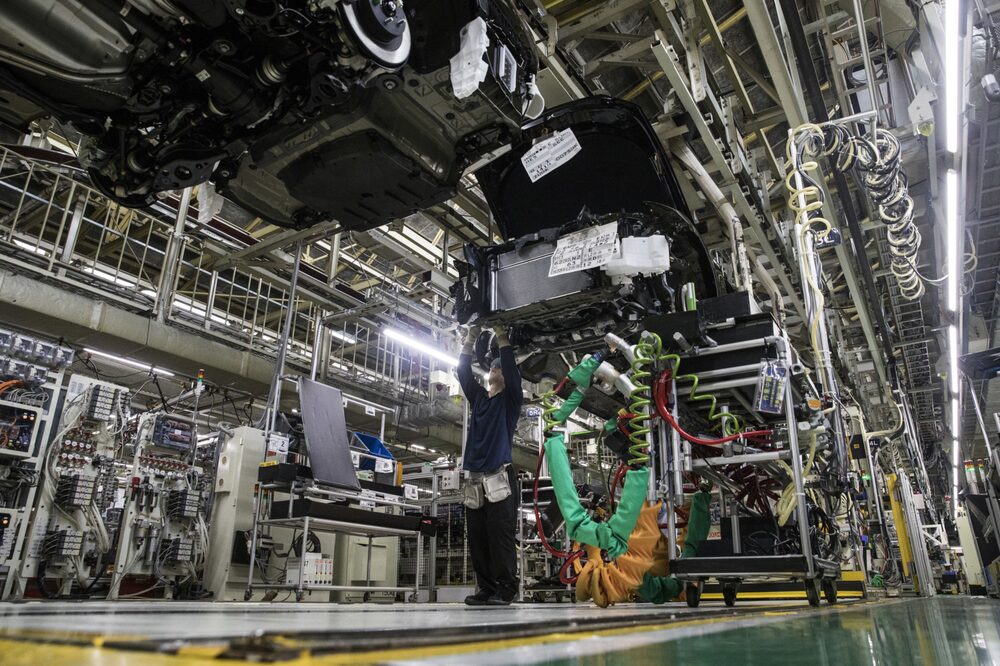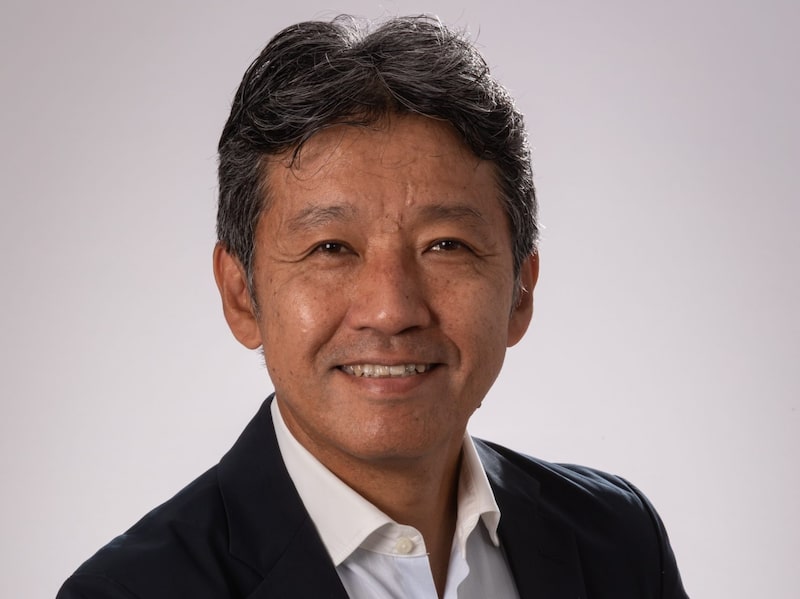Buenos Aires — Japanese carmaker Toyota celebrated 25 years manufacturing vehicles in Argentina this week, and the company’s plans are aimed at consolidating its position as the country’s leader in sales, production and exports.
The company will also seek to continue expanding throughout Latin America, without losing sight of the need to drive the transition to sustainable mobility.
The goal of achieving carbon neutrality by 2050, one of its global aspirations in terms of environmental protection, establishes principles and criteria to be clear about where it should be heading. However, the goal of reaching zero-equivalent emissions by phasing out the use of fossil fuels will be delayed in the region, at least relative to Japan, according to Masahiro Inoue, Toyota’s CEO for Latin America and the Caribbean.
“Latin America is not ready, because it is different from Japan. Geographically it is gigantic (...) The infrastructure is not ready yet,” Inoue said in an interview with Bloomberg Línea.
In Argentina, the company’s Hilux pickup model, which is assembled at the plant in Zárate, in Buenos Aires province, has been its top-selling model in the country for 16 years. The company’s expectations for this year are positive, despite the complex scenario in Argentina, and the unexpected war in Ukraine, Inoue said, and who traveled to Argentina to mark the company’s 25th anniversary of manufacturing here.
The following conversation was edited for length and clarity.
Bloomberg Línea: What assessment can you make on this anniversary date?
Masahiro Inoue: I am very happy and proud that this project is a success in Brazil and Argentina. Consumers are trusting our product. I am very happy for these 25 years in Argentina.
The best-selling pickup truck in the country is the Hilux, do you see that it is a market that has room to grow?
We are very happy. The mid-size pickup did not exist in Latin America. Only the big ones were produced and Toyota started to export the Hilux from Japan to Latin America. The volume was very small, but they started to be successful in Chile, Peru, Argentina and Brazil. Then we decided to invest money and produce in Argentina. It was not only to serve customers in the country, we also started to export. At first it was only Brazil and Paraguay, but then we started to expand. Now there are in 22 countries in Latin America that buy pickups made in Argentina. I am very proud of this.
At a regional level, how do you see the automotive market?
In Latin America, five million new cars are sold every year. That’s about the same size as Japan. The markets are similar. I think that Latin America’s potential is even greater than Japan’s, because there it is already falling. In Latin America we are still growing. There is still a lot of market potential. In the next 25 years this will be even greater. That is the feeling I have.
How do you see the emission-related challenges for the automotive industry in the coming years?
Carbon neutrality is a challenge for everybody. The automotive industry, the energy sector, the oil sector, everyone has responsibilities. Toyota has to contribute to carbon neutrality for the business worldwide and in Latin America as well. It is a very big challenge for the business in Argentina, Brazil and all of Latin America.
How can that challenge be met, and do you see it as possible?
Toyota has things it can control and things that are out of the company’s control. For example, the energy generated in Paraguay is 100% hydro. The size of the country is small, but, for example, the Itaipú hydroelectric power plant, which is half Brazilian and half Paraguayan, provides half of Paraguay’s power. That is very good. However, in a case like Argentina, which is a bigger country than Paraguay, the electricity is emitting CO2.
Regarding the sustainability of the automotive sector, how do you see the future of hybrid cars in the country and, particularly, of electric cars? How likely is it that they will predominate in Argentina at some point?
We produce hybrid cars such as the Corolla and Corolla Cross in Brazil. In Argentina we produce the Hilux pickup, diesel and gasoline versions. Sustainability, together with neutrality, is the challenge for Toyota. Latin America is not ready for battery-powered vehicles because it is different from Japan. Geographically it is gigantic. Japan is small and Argentina is 24 times bigger than Japan. The infrastructure is not ready yet. In Japan, the government has freedom in the sense of money to invest in infrastructure. Now I live in Brazil and I travel to Argentina and they are two gigantic countries. Battery-powered cars are going to take a long time.
So, there is a long way to go to achieve a mass system of hybrid cars, but do you have any time estimate? For example, there is an Argentine government project that promotes 20-year incentives to encourage the use of technologies with a lower environmental impact.
The Argentine government is sincerely thinking about how to reduce CO2. This will not happen in a week, nor in a year. It will take 20, 30 years. In European countries such as Spain, France, Norway, generally, the geographical size is small, so electrification goes at a faster speed. In Argentina, with such a gigantic size, it needs a lot of investment in infrastructure. I think this may take a little longer. Therefore, according to the speed of the infrastructure, Toyota has to offer adequate models for consumers.

For 2022, what is Toyota’s goal for the region, and for Argentina?
Last year, in Toyota Argentina we produced 142,000 pickups and exported 70% of them. Domestic sales accounted for 30%. I believe that the demand in Argentina and in export countries will be higher than last year, so we have to produce and export. This will be a challenge. Also, there is a lack of parts. We are trying to produce as much as possible, but I don’t know the final result for this year. How many will it be? 150,000, 160,000? Or it could be there will be fewer units than last year because of the global turmoil, the economy, logistics and also the war between Russia and Ukraine, which is very worrying.
So, the demand is going to be there and it’s going to grow, but the problem is the external issues that are going to interfere with that process?
Demand is going up, but supply is the problem. Still, 20%, 25% of the parts are not manufactured here, so they have to be brought from Japan or other Asian countries. If the car lacks the steering wheel, it cannot be sold. That is what is happening. If a part is missing, the car is not complete and we cannot deliver it to the customers.
You mentioned the war between Russia and Ukraine, what consequences do you see in the company, in the sector, as a result of this war?
I don’t know what can happen. Toyota has a factory in Russia, that is, it manufactures and sells in Russia. In Ukraine we have distributors. Both are paralyzed. We have to think about stopping this war. How it will affect the world economy, I don’t have a clear vision. The whole world is connected: parts, information, labor, money flow. Everything is connected. Producing pickups in Buenos Aires, 70% of them are exported. If the economy collapses, Argentina will lose. Nobody has a clear vision of what is going to happen, so we are going to maximize production today.
Have you planned the next step, the next investment in the region or in Argentina?
Brazil and Argentina are two countries that manufacture pickups and cars, negotiating with supply chains and creating jobs. This is very important to me. The war will end one day, so I would like to keep the factories in Argentina, in Mercosur and always generate employment, buying domestic parts, serving export customers and growing sustainably. In Latin America we are still growing and that is very important.
Translated from the Spanish by Adam Critchley




